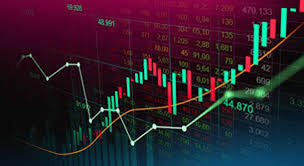
The Ultimate Guide to Forex Trading Simulators: Master the Market
In the fast-paced world of Forex trading, success relies heavily on skill, knowledge, and experience. One of the best ways to gain this competence is by utilizing a forex trading simulator Trading Brokers in Turkey simulator. These tools allow traders to practice their strategies without risking real money, providing an invaluable learning experience. This article delves into the importance of Forex trading simulators, their various features, and how traders can maximize their effectiveness.
What is a Forex Trading Simulator?
A Forex trading simulator is a software program that mimics real market conditions, allowing users to practice trading strategies in a risk-free environment. These simulators often provide virtual currency, enabling traders to execute trades, monitor price movements, and analyze market trends as they would in a live trading scenario.
Why Use a Forex Trading Simulator?
- Risk-Free Learning: Trading simulators allow novice traders to learn the ropes without fear of losing real money. This risk-free environment is crucial for gaining practical experience.
- Strategy Testing: Implementing various trading strategies in a simulator can help traders identify what works best for them. This process is essential for refining techniques before applying them in a real market.
- Emotional Preparation: Trading is often influenced by emotions. Simulators help traders practice emotional control by exposing them to high-pressure situations without the stakes involved in live trading.
- Understanding Market Dynamics: A simulator provides a clear view of how multiple factors affect currency prices, enabling traders to deepen their understanding of market behavior.
Key Features of Forex Trading Simulators
Not all Forex trading simulators are created equal. When choosing a simulator, traders should look for key features that enhance their learning experience:
1. Realistic Market Conditions
The most effective simulators mimic actual market conditions as closely as possible. This includes realistic price fluctuations, spreads, and order types.
2. User Interface

A well-designed user interface enhances the learning experience, making it easy for traders to navigate the platform and execute trades.
3. Educational Resources
Top-notch simulators often provide educational materials, including tutorials, webinars, and articles that help traders learn more about Forex trading.
4. Performance Statistics
Robust simulators track performance metrics such as win/loss ratios, average trade duration, and total return on investment. This data is invaluable for refining trading strategies.
How to Get Started with a Forex Trading Simulator
Starting with a Forex trading simulator is straightforward. Follow these steps to begin your journey:
- Choose a Simulator: Research various Forex trading simulators to find one that suits your needs. Look for user reviews and comparisons to make an informed choice.
- Create an Account: Once you’ve selected a simulator, sign up for an account. Most simulators offer free trials or demo accounts.
- Learn the Platform: Spend time getting familiar with the platform. Understand how to execute trades, set stop-loss orders, and access analytical tools.
- Practice Trading: Start executing trades using the virtual currency provided. Test different strategies and take notes on your performance.
- Analyze and Adjust: Review your trading statistics regularly. Identify areas for improvement and adjust your strategy as needed.
Common Mistakes to Avoid When Using a Trading Simulator
While simulators are fantastic learning tools, they are not without pitfalls. Here are some common mistakes traders should avoid:
- Treating It Like Real Trading: Remember that a simulator lacks the emotional stakes of live trading. Don’t let your performance in the simulator lead to overconfidence.
- Neglecting Risk Management: Many traders ignore risk management practices in simulators. It’s essential to apply these principles even in a risk-free environment.
- Failing to Review Performance: Consistently reviewing performance metrics helps identify strengths and weaknesses. Neglecting this step can hinder improvement.
- Sticking to One Strategy: Using a single trading strategy can limit growth. Experiment with various strategies to find what works best for you.
Conclusion
In conclusion, Forex trading simulators are vital tools for both new and experienced traders. They provide a safe environment to practice, test strategies, and develop critical trading skills. By understanding how to use these simulators effectively, traders can significantly enhance their performance and readiness for live trading. Whether you are a novice looking to learn the ropes or a seasoned trader aiming to fine-tune your strategies, investing time in a Forex trading simulator will pay dividends in your trading career.
